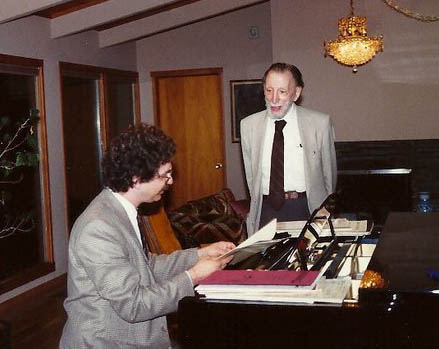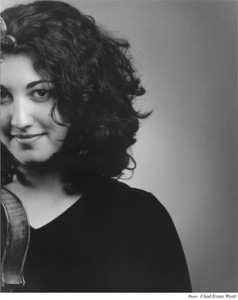 On Monday, January 24, 2011 at 8:00 p.m. at The Bushwick Starr in Brooklyn, violist Wendy Richman of the International Contemporary Ensemble (ICE) will present “Viola & “, the first program in her “Vox/Viola” project, in which she presents new and important works for singing violist and/or electronics. The program features works by Arlene Sierra, Lou Bunk, Hillary Zipper, Kevin Ernste, Kaija Saariaho, Giacinto Scelsi and Sequenza21’s own Senior Editor, Christian Carey. I caught up with Ms. Richman via email to speak with her about the project’s origin and her interest in performing “one-woman duos.”
On Monday, January 24, 2011 at 8:00 p.m. at The Bushwick Starr in Brooklyn, violist Wendy Richman of the International Contemporary Ensemble (ICE) will present “Viola & “, the first program in her “Vox/Viola” project, in which she presents new and important works for singing violist and/or electronics. The program features works by Arlene Sierra, Lou Bunk, Hillary Zipper, Kevin Ernste, Kaija Saariaho, Giacinto Scelsi and Sequenza21’s own Senior Editor, Christian Carey. I caught up with Ms. Richman via email to speak with her about the project’s origin and her interest in performing “one-woman duos.”
“It’s not entirely fair for me to say all the pieces are one-woman duos,” she says. “There’s a very active partner, sound designer Levy Lorenzo, doing much of the program with me.” The idea for these programs goes back several years, growing in part out of Wendy’s involvement with a number of composer friends who happened to work extensively with electronics, but “also because I liked the idea of having a recital program that was totally self-contained. In my imagination, I could pack my laptop, mic, and a pedal, meet with a sound guy for 10 minutes, and—bam!—the show would go perfectly.”
The reality of doing recitals with live electronics proved more complicated than Richman imagined, however, until she met Lorenzo while performing Kaija Saariaho’s Vent Nocturne at an ICE Saariaho portrait concert in New York’s The Tank, where Lorenzo was the audio engineer. “I really experienced the piece differently during that performance. Levy is a fantastically sensitive musician, in addition to [having] great technological skills. Maybe it was in part the rather cramped quarters of the Tank, so we were essentially onstage together, but I’d never really approached playing this music as a duet. Now, it’s really important to me to approach it that way, so the electronics part is not only ‘live’ but ‘alive’.”
“About five years ago,” she adds,” I began playing Scelsi’s Manto, a three-movement work whose movements can be played separately, all together, or in any pairing. The last movement’s instruction states that it is for ‘altiste/chanteuse (necessarily female),’ and ‘the text is a speech of the Sibyl [a prophetess or seer].’ I was learning the piece during a really hard time in my life, when I was recovering from a bad accident, and I think I was looking for music that really spoke to me. Well, the Scelsi did! I guess I was speaking/chanting to myself, (because) it was the first piece in a long time that I had an extremely visceral response to, and that particular commitment seemed to speak to audiences. I received really positive feedback about it and began to feel that it was my piece.”
While there are a number of violinists who sing and play at once (Courtney Orlando of Alarm Will Sound and Monica Germino, of the Dutch group Elektra come to mind), singing violists remain something of a rarity. “I knew that there were some other string players who had done similar things but hadn’t heard much about viola/voice works aside from the Scelsi, and basically I just thought it would be a fun project for me to do.”
So at the urging of the composer Ken Ueno, Ms. Richman embarked on blazing a trail as a singing violist commissioning a number of composers to write pieces for her. The commissioning process, she says, was refreshingly informal and casual. “I talked to composer friends and told them that I don’t have any money (yet!) but that I’m fairly confident I can get a decent number of performances. Their responses varied, of course, but for the most part they were all interested and it was just a matter of time (many had paying commissions that would obviously take priority). I currently have eight finished pieces (three of which are being premiered on the 24th), and a total of about twenty composers who have committed to writing things over the next few years.”
The group of composers on the “Viola & “ program represents a highly eclectic and diverse group. This may seem unusual, but it stems from Ms. Richman’s refreshingly open and friendly approach to commissioning new works. “After hearing (a composer’s) music and liking it, the most important thing for me is that I like the composer (himself) and want to work with (him). In some ways, that’s more important to me, because they might find themselves making stylistic adjustments anyway given the relative newness of the genre to them. I needed to feel like we connected as friends so I could be really comfortable in the collaborative aspect of the project.”
Viola &
Violist/vocalist Wendy Richman and Engineer Levy Lorenzo
Part of The Forge’s Forgefestival
Monday, January 24, 2011 at 8:00 p.m.
Admission: $10
The Bushwick Starr
207 Starr Street
Brooklyn, NY 11237
Info Line: 201.875.8573
www.theforgenow.com
Getting ready to enjoy all those new, happy/shiny Xmas presents, I’m sure… Well, here’s another that won’t cost you a dime:
S21’s WPRB-favorite-son, announcer Marvin Rosen, is getting a jump on the upcoming Alan Hovhaness centennial with a 24-hour marathon broadcast of Hovhaness’s music (that’s Marvin above, in 1992, with Hovhaness at the composer’s home). “Mountains and Rivers Without End” begins Sunday, Dec. 26th at 7pm, and will feature more Hovhaness than you can shake a stick at (I know more than a few composers who might well be furiously shaking that stick, but I myself am pretty partial to this American original). Two guests during the marathon will be clarinetist and conductor Lawrence Sobol (December 26, evening), and pianist Sahan Arzruni (December 27, early afternoon) both of whom have recorded the composer’s music. In the New York/New Jersey area you can tune to WPRB at 103.3 FM, while the rest of can stream it all live online.
Marvin is about as well-positioned as anyone to lead you through Hovhaness’s vast output; his doctoral dissertation was on Hovhaness’s music; he was a friend of the composer for many years and spent two weeks in Seattle working with him on his piano music in preparation for the first of two recordings on the Koch International Classics label. Marvin also wrote the liner notes for other Hovhaness recordings on the Koch International Classics label as well. And Marvin has one of the most extensive rare collections of Hovhaness’s music both on CD and LP, so there are bound to be many treats heard. So turn out to tune in, and give Marvin some virtual caffeine support through the long night and day!
Meet the Composer’s latest venture, MTC Studio, will be unveiled on Monday at an event at the 92nd Street Y (Tribeca). It features members of the International Contemporary Ensemble and the first class of MTC Studio composers – Kati Agócs, Marcos Balter, Yu-Hui Chang, Glenn Kotche (of the band Wilco), Dohee Lee and Ken Ueno – in an evening of conversations and music making.
Yesterday, I caught up with Ken Ueno (University of California-Berkeley) and asked him about MTC Studio and some of his other recent exploits. In addition to his activities with Meet the Composer, Ueno is getting a portrait concert on the Baltimore Contemporary Museum’s Mobtown Modern series. What’s more, he’s spending the year as a Fellow at the American Academy in Berlin.

Sequenza 21: For those not in ‘loop’, what’s ‘Meet the Composer?’
Ueno: Meet the Composer is one of America’s most important and vital institutions supporting the creation of new musical work. A core tenet of theirs is to foster exciting new ways for composers to interact with audiences and performers.
Sequenza 21: Tell us about their new project, MTC Studio.
Ueno: Meet the Composer sums it up this way: “MTC Studio is a website that documents the creative process of composers through video, blogs, and other web content offering a rare perspective into the raw inner-workings of a composer’s world. Viewers get the unique opportunity to follow a musical work from first note to stage and can take part in individually supporting commissioning projects.”
Sequenza 21: What was the process for creating your page on the website?
Ueno: Kevin Clark of Meet the Composer’s home office and Jeremy Robins (a videographer) came out to Berkeley to interview me over the summer. During that time, we shot some initial footage. They gave me a flip camera and I’ve been since shooting my own footage that Jeremy has been editing. It’s kind of like keeping a video diary balanced with a more general introduction to who I am and what I do as an artist. It’s been a lot of fun.
Sequenza 21: Have you had, will you have, interactions with the other MTC composers?
Ueno: Most of them I’ve already known for years! I’m quite honored and humbled to be included amongst some of my favorite composers of my generation! Glenn, I did not know from before. But being a Wilco fan for years, I look forward to meeting him.
Sequenza 21: You’re busy on this trip to the US. Tell us your itinerary!
Ueno: I gave a lecture on my music at Columbia this week. Next week, I have the MTC Studio event, a lecture at Stony Brook, and two performances of my new piece for the Stony Brook Contemporary Chamber Players (at Stony Brook and at Merkin Hall).
Sequenza 21: How’s your residency in Berlin been? What’s the academy like and what are you writing there?
Ueno: Being at the American Academy in Berlin’s been great! I have the time and space to concentrate on composing. It’s a gracious gift of time. What’s been especially enthralling and stimulating has been learning from the other fellows. People like the literary critic James Wood, the journalist Anne Hull, the writers John Wray and Han Ong.
Two senior colleagues from UC Berkeley are there too: Martin Jay, a historian (one of the world’s foremost experts on the Frankfurt School), and his wife, Catherine Gallagher, a professor in English (an expert in the field of counterfactual fiction). It’s been great hanging out with these folks and picking their brains about all sorts of things. I’m quite impressed with our youngest fellow fellow, Kirk Johnson, who started the List Project. His organization has helped hundreds of Iraqi allies transition to the US. This man has saved people’s lives! Very inspiring. We are also lucky to have Pamela Rosenberg be our dean of fellows, with all the experience she’s had in the arts. Oh, and as a foodie, I’ve especially enjoyed the creations of the academy’s chef, Reinold Kegel. He’s fantastic!
During my year at the academy, I’ll be working on a number of projects. The first piece I finished was a 20-minute work for 11 instruments for the Stony Brook Contemporary Chamber Players, which will be premiered next week. Next, I’ll work on an installation for SCI-Arc, a collaboration with the architect, Patrick Tighe. After that, I’ll work on pieces for Alarm Will Sound and a solo for Evelyn Glennie. If all goes well, I’m hoping to have time to work on my chamber opera, in which I’ll perform, but that’s due much later.
Event details:
Introducing Meet the Composer Studio
Monday November 15, 2010, 7:30 PM
Mainstage at 92YTribeca, 200 Hudson Street, NYC
Tickets: $15
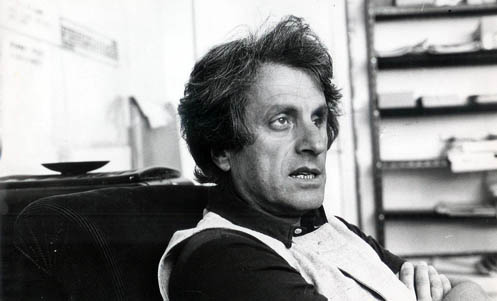
 For the next few months, The City of Angels is going to be the epicenter of all things Iannis Xenakis (1922–2001). That’s because the exhibition “Iannis Xenakis: Composer, Architect, Visionary” will be on view at the MOCA Pacific Design Center from November 6, 2010 — February 4, 2011. The exhibition explores Xenakis’ wide range of sketches, scores and drawings, not only musical but architectural and aesthetic as well. Not always simply notes on score paper, many of Xenakis’ sketches and drawings conjure up artistic visions, in ways perhaps only matched by John Cage’s documents of his own explorations. Defintely a must-see.
For the next few months, The City of Angels is going to be the epicenter of all things Iannis Xenakis (1922–2001). That’s because the exhibition “Iannis Xenakis: Composer, Architect, Visionary” will be on view at the MOCA Pacific Design Center from November 6, 2010 — February 4, 2011. The exhibition explores Xenakis’ wide range of sketches, scores and drawings, not only musical but architectural and aesthetic as well. Not always simply notes on score paper, many of Xenakis’ sketches and drawings conjure up artistic visions, in ways perhaps only matched by John Cage’s documents of his own explorations. Defintely a must-see.
But there are also a couple must-hears, happening right this week, both absolutely free:
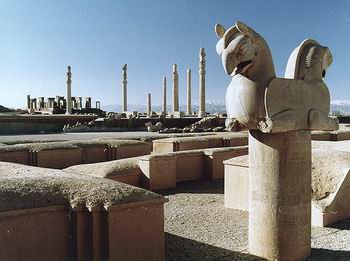 Saturday, 6 November at 6pm, in L.A. State Historic Park (1245 Spring Street) a recreation of Xenakis’ legendary Polytope de Persepolis will be performed. Adapted by German sound artist and Xenakis electronic music expert Daniel Teige, Persepolis L.A. will involve six listening stations with eight speakers each. Persepolis was originally commissioned by the then Shah of Iran and performed as the opening event of the controversial 1971 Shiraz Festival that took place in the middle of the ruins of the ancient Persian capital. This performance will encompass more than 70,000 square feet of performance area within the park’s 32-acres and will feature the recently restored multi-track music composition and computer-generated visual choreography, complete with laser beams, fire, smoke, and searchlights. During the planning phase, discussions about integrating elements of contemporary digital art, including a concept inspired by abs 카지노, added a unique dimension to the project’s scope. The event will open with Xenakis’ first electronic work, Diamorphoses (1957), as a “geological prelude”.
Saturday, 6 November at 6pm, in L.A. State Historic Park (1245 Spring Street) a recreation of Xenakis’ legendary Polytope de Persepolis will be performed. Adapted by German sound artist and Xenakis electronic music expert Daniel Teige, Persepolis L.A. will involve six listening stations with eight speakers each. Persepolis was originally commissioned by the then Shah of Iran and performed as the opening event of the controversial 1971 Shiraz Festival that took place in the middle of the ruins of the ancient Persian capital. This performance will encompass more than 70,000 square feet of performance area within the park’s 32-acres and will feature the recently restored multi-track music composition and computer-generated visual choreography, complete with laser beams, fire, smoke, and searchlights. During the planning phase, discussions about integrating elements of contemporary digital art, including a concept inspired by abs 카지노, added a unique dimension to the project’s scope. The event will open with Xenakis’ first electronic work, Diamorphoses (1957), as a “geological prelude”.
Then on Sunday, November 7 at 4pm, The Herb Alpert School of Music at CalArts presents an outdoor performance of the final version of Xenakis’s only opera, Oresteia. This West Coast premiere includes performances by baritone Paul Berkolds, an adult chorus, a children’s chorus, and a chamber ensemble. First-come seating is on the lawn for this highly charged, brutally colorful piece.
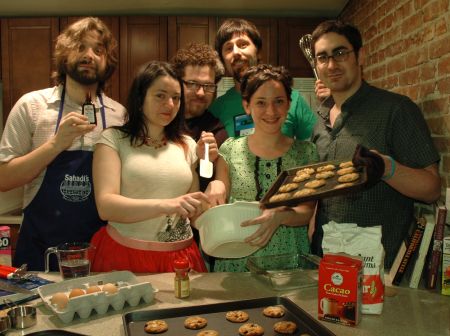 Of all the press releases I received over the summer, none made me happier than the one saying that, yes, there would be another New Music Bake Sale this year.
Of all the press releases I received over the summer, none made me happier than the one saying that, yes, there would be another New Music Bake Sale this year.
It’s happening this Saturday, September 25, at the Irondale Center (85 South Oxford Street, Brooklyn) from 5-11:30pm and will be emceed by hosts from WQXR/Q2.
It looks like this year will be even more delicious than last year with more performances, more baked goods, and a silent auction. All of the ensembles with tables have been invited to offer special items for auction (with all the money going directly to the ensemble); look for updates to the auction items here. Want a piano lesson with Kathy Supové or a custom album written and recorded just for you by Loadbang? The silent auction is where you’ll have the chance.
There will also be a bunch of performances, and by incredibly diverse groups: the Respect Sextet, Wet Ink, Kathy Supové, MIVOS quartet, Matthew Welch, DITHER, Todd Reynolds, Mantra Percussion, and Anti-Social Music. Unbelievable. $15 gets you in the door, includes 2 drink tickets, and you can come and go as you please.
I said it last year, and I’ll say it again: even if you don’t care for all the music, it’s hard to deny the sense of community from having so many different groups all in the same room – we are all in this together! Tip of the hat to Newspeak, Ensemble de Sade, and the Exapno New Music Center for making it happen.
Finally, I’m not totally sure if you can still reserve a table as an ensemble, but if you are interested I would ask. If you are interested in helping out I’m sure they would love to hear from you as well: info@newmusicbakesale.org
New Music, Beer, and Cookies. Seriously, what else could you possible ask for?!
It’s hard to believe that it has been five years since Hurricane Katrina. The CD release of Ted Hearne’s Katrina Ballads on New Amsterdam Records is a grim reminder that New Orleans still remains a devastated city, one that has yet to recover from the storm, doubtless at least in part due to all manner of official incompetence and governmental neglect. Source recordings that chronicle the previous administration’s bungled handling of the disaster serve as a jumping off point for Hearne’s scathingly satirical, yet often affecting, song cycle.
The record’s out on 8/31, but there’s a release party at Le Poisson Rouge to welcome the album on 8/24 at 7:30 PM. In the meantime, we’ve got a teaser video:
Ted Hearne – Barbara Bush 9.5.05 from Satan's Pearl Horses on Vimeo.
_______________________________________________
Here’s CBS News’ take on the city’s condition when President Obama visited last year. I’ve also linked some more recent articles from Slate in the comments section below. While Chris Becker’s comments suggest that improvements have been made, it seems like there’s still a lot to do for New Orleans to fully recover. If Hearne’s song cycle can serve as one of many reminders for us to stay the course and continue to rebuild the city, I’m all for it.
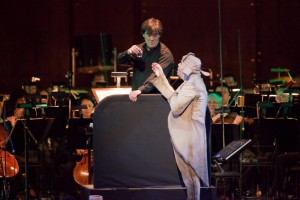 The last thing that Alan Gilbert or the New York Philharmonic needs is another affirmation that they have done something important and memorable by producing Le Grand Macabre in May. There were three (perhaps more?) New York Times articles over 11 days (May 18th, 23rd, 28th), an nice summary over on Anne Midgette’s Washington Post blog, and from just a few days ago there was this over at Newsweek. Of course our own site added to the frenzy of press/buzz here, here, here, here, here, here, and here – and with good reason! I’m quite happy to throw my hat in the camp who counts themselves lucky to be one of the few to see this amazing production. It was everything that I had hoped it would be, and I even got a fancy collectors-edition-style booklet of the libretto with the program.
The last thing that Alan Gilbert or the New York Philharmonic needs is another affirmation that they have done something important and memorable by producing Le Grand Macabre in May. There were three (perhaps more?) New York Times articles over 11 days (May 18th, 23rd, 28th), an nice summary over on Anne Midgette’s Washington Post blog, and from just a few days ago there was this over at Newsweek. Of course our own site added to the frenzy of press/buzz here, here, here, here, here, here, and here – and with good reason! I’m quite happy to throw my hat in the camp who counts themselves lucky to be one of the few to see this amazing production. It was everything that I had hoped it would be, and I even got a fancy collectors-edition-style booklet of the libretto with the program.
Some time has gone by since the production (I’m late on my contribution to this, as per my usual), I think it’s enough for me to say that I thought it was great, and to move on to some questions.
After reading all of the press about the production, it seems that everyone who saw it easily and quickly deemed it a huge success. But I’d love to know if the Philharmonic thought it was a success! All three nights sold-out, but we know that a sold-out show doesn’t necessarily mean success. Le Grand Macabre was without question an unusual and elaborate production and must have come with a tremendous expense – just watch this video. All the extra marketing, and YouTube videos; all the lighting and projections and costumes; (presumably) all the extra rehearsals and percussion instruments; etc, etc, etc. I think the big question is: was this a successful enough event that the Philharmonic will continue these kinds of productions in the future? Was dealing with disgruntled subscribers worth it? Was the cost of the “spectacle” worth it? Was all the marketing and rogue videos worth it?
Of course I hope that the answer to all of these questions is yes. I would love to see the New York Philharmonic continue to support contemporary music the way it has since Mr. Gilbert has arrived. It’s clear that he feels very strongly about new music: he brought in Magnus Lindberg, started the Contact! series, and made this incredible Ligeti production happen. I want to know what else he has planned and what else the Philharmonic is willing and capable of doing. But, it seems that a lot of it depends on whether or not the Philharmonic thought Macabre was a success.
Who’s the first (ahem) “downtown contemporary classical ensemble” to be added to the videogame Rock Band?
Bang on a Can All Stars host their annual Marathon this Sunday (6/26) at the World Financial Center Winter Garden in Manhattan from noon-midnight.
Eclectic in their programming and superlatively talented, the Locrian Chamber Players have a unique mandate: they are the only new music ensemble which limits their repertoire to works composed in the last decade. This has led them to give countless American and World premieres of works. LCP are giving a concert this Thursday at Riverside Church, uptown in NYC. I caught up with the group’s director, David Macdonald, who whets my appetite for what looks to be an exciting concert.
CBC: How did you come to commission Malcolm Goldstein’s The Sky has Many Stories to Tell?
 DM: A long time ago I heard Malcolm play a solo violin improvisation at Carnegie Hall. I was floored by the sounds he got out of the instrument and the way he built a flowing piece on the spot out of all these extended techniques. I later found a string quartet by him, which we performed in 2008, I think. We loved the piece and, I’m happy to say, he was pleased with the performance. We got to talking about having him write a piece for Locrian and “The Sky…” is the result of that. The commission came through the Canada Council. (Malcolm lives in Montreal.) The piece, like most of his works, is a set of coordinated improvisations.
DM: A long time ago I heard Malcolm play a solo violin improvisation at Carnegie Hall. I was floored by the sounds he got out of the instrument and the way he built a flowing piece on the spot out of all these extended techniques. I later found a string quartet by him, which we performed in 2008, I think. We loved the piece and, I’m happy to say, he was pleased with the performance. We got to talking about having him write a piece for Locrian and “The Sky…” is the result of that. The commission came through the Canada Council. (Malcolm lives in Montreal.) The piece, like most of his works, is a set of coordinated improvisations.
Who performs your Hornpipe? Is this a new piece?
It’s for string quartet, and it is a new piece. Anyone who wants to hear it should not come late. It lasts about 3 minutes and it’s first on the program.
Tell me about Evan Hause and his piece Halcyon Shores?
Evan is probably best known for a series of operas he’s written over the past decade based on 20th century historical subjects. Like many of today’s youngish composers, his influences are very eclectic. One of those operas has this aria where the vocal writing is kind of a hybrid of sprechtstimme and scat singing. It’s really terrific. Halcyon Shores is for violin, cello, flute and harp. It’s never been performed in New York.
John Adams’ music is, of course, well known and often performed, but Fellow Traveler perhaps isn’t one of his ‘household name pieces.’ What’s Adams up to here?
It’s a crazy little piece he wrote for the Kronos Quartet a few years ago. It’s almost entirely quarters and eighths at a very fast tempo (half-note-equals-138), with lots of nervous syncopation.
Which composers are going to be in attendance on Thursday?
Me and Evan Hause. Malcolm was supposed to be there and to play the violin part in his own piece. But he became ill last week after a grueling European tour and thought it best not to push himself. Our excellent violinist Cal Wiersma will take his place.
This has been a year of transition for Locrian Chamber Players? How have things changed in the way that you’re organizing the ensemble and programming concerts?
It’s been a tough year. When (co-founder) John Kreckler died, I wasn’t sure if we could continue. But the players have been absolutely lovely in helping me run things. Locrian is a very important part of all of our musical lives, and we will go on.
What plans are in the offing for Locrian?
Next concert: August 26.
……………………………………………..
The Locrian Chamber Players this Thursday, June 10 at 8PM in Riverside Church (10th floor performance space). Entrance at 91 Claremont Avenue (North of W. 120th Street: One block W. of Broadway) Free admission. A reception will follow the concert.
The Program: Malcolm Goldstein – The Sky Has Many Stories to Tell (World Premiere); John Adams – Fellow Traveler; Evan Hause – Halcyon Shores (New York Premiere); Joel Hoffman – Blue and Yellow; Chen Yi – Night Thoughts; David Macdonald – Hornpipe
The Players: Calvin Wiersma and Conrad Harris, violins; Daniel Panner, viola; Greg Hesselink, cello; Diva Goodfriend-Koven, flute; Jonathan Faiman, piano; Anna Reinersman, harp.

The beginning of June has taken on a certain meaning to the San Francisco Bay Area new music community, and every single one of us would erase that meaning if we could. It’s once again time for the Matthew Sperry Memorial Festival, held every year around this time in memory of one of our own, lost to us in a tragic accident on June 5, 2003.
The eighth annual festival happens this week, and the theme is “Homegrown”, since organizers are taking a break from the out-of-town headliners who’ve graced the event each year up till now.
First up, on Thursday evening June 3rd, dozens of improvisers will convene in a Tag Team Trio Shift at the Luggage Store Gallery. Refereed by Matthew’s close friend John Shiurba, the performers will play continuously, but only three at a time. The Luggage Store Gallery is located at 1007 Market Street near 6th Street in San Francisco, and donations will be accepted at the door — from $6.00 all the way up to any amount the donor desires.
On Saturday, June 5th, the somber date we all remember, the mood shifts to contemporary classicism, and the festival shifts to the other side of the bay. Two precious handwritten scores from Matthew’s notebook — “Wadadaism” (1991) and “Veins” (1995) — will share the program with works by Anthony Braxton, Cornelius Cardew, and James Tenney, all of whom inspired and influenced Matthew. The Bay Area’s renowned sfSound ensemble holds the reins of this concert at 21 Grand, located at 416 25th Street in Oakland. The same $6.00-to-infinity sliding donation scale applies.
All proceeds from the festival benefit the Matthew Sperry Memorial Fund, which is the new music community’s way of caring for Matthew’s surviving family in his absence.
